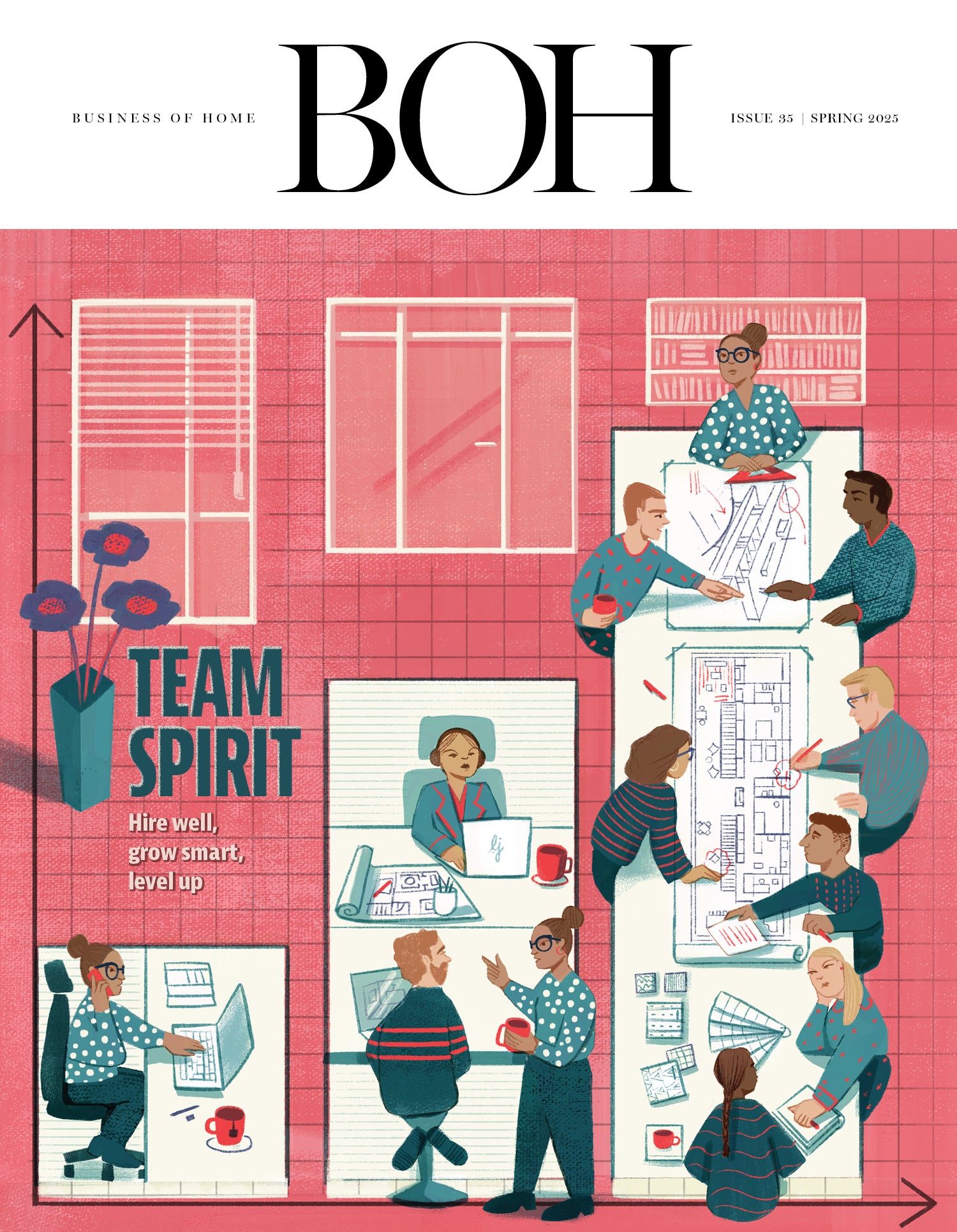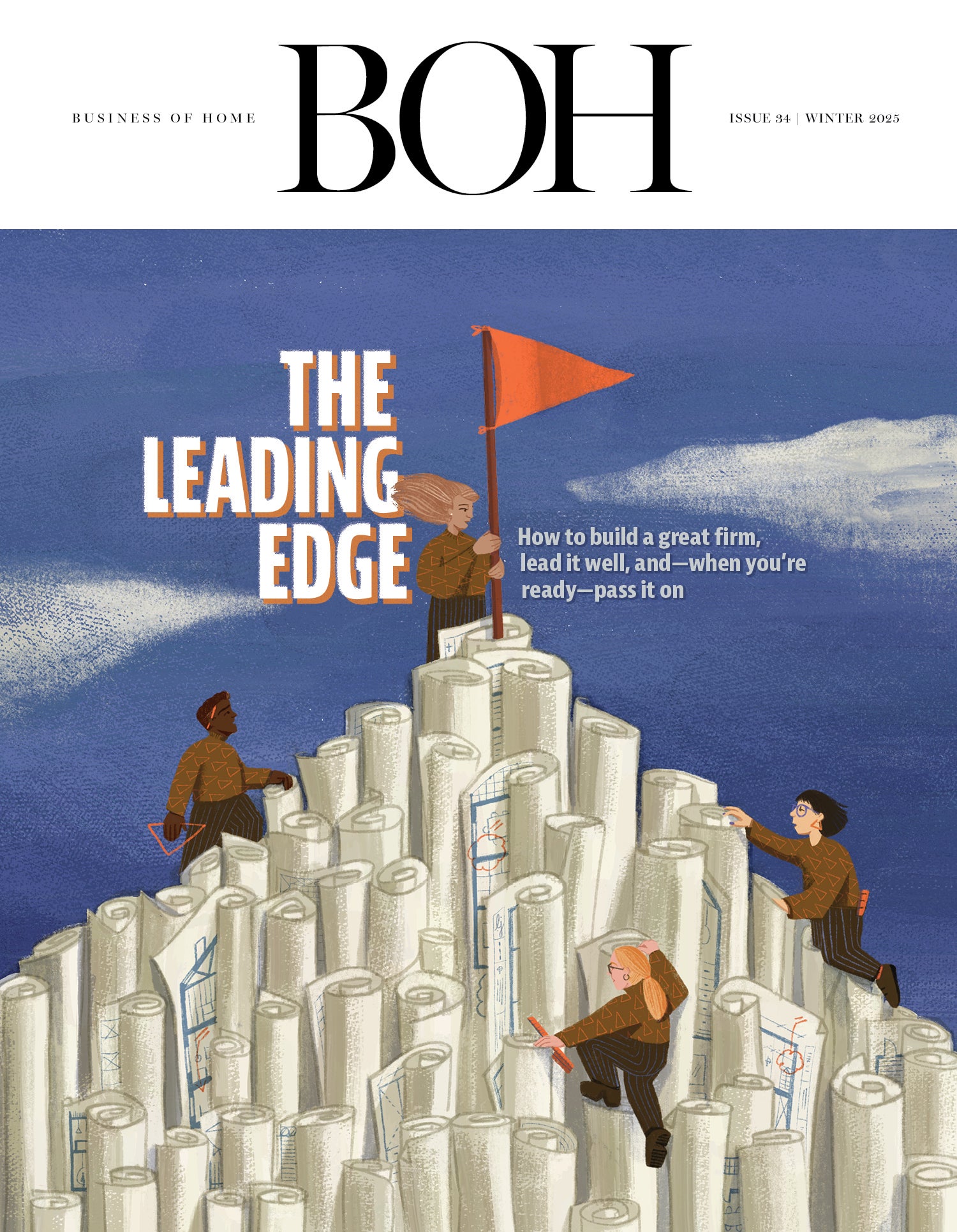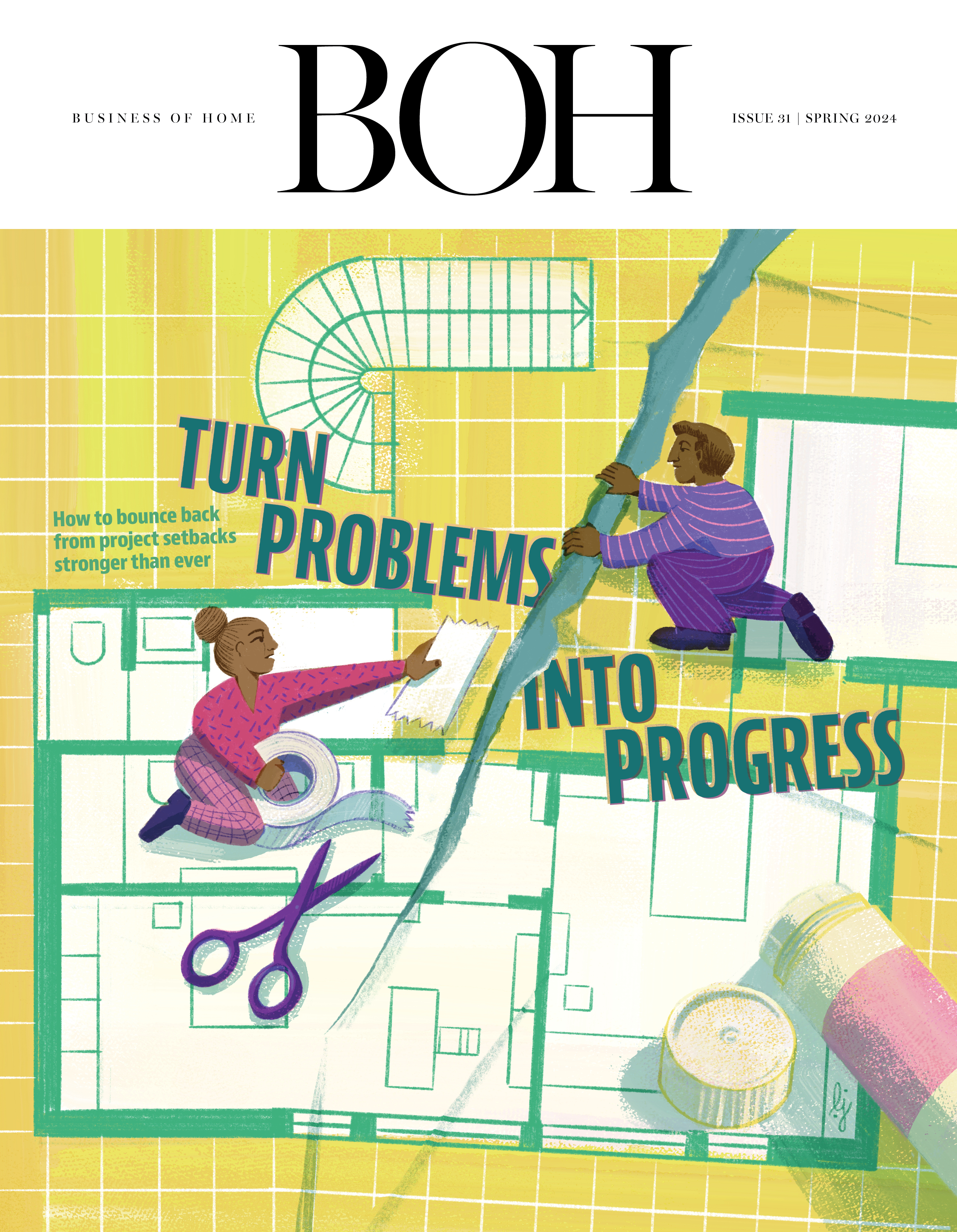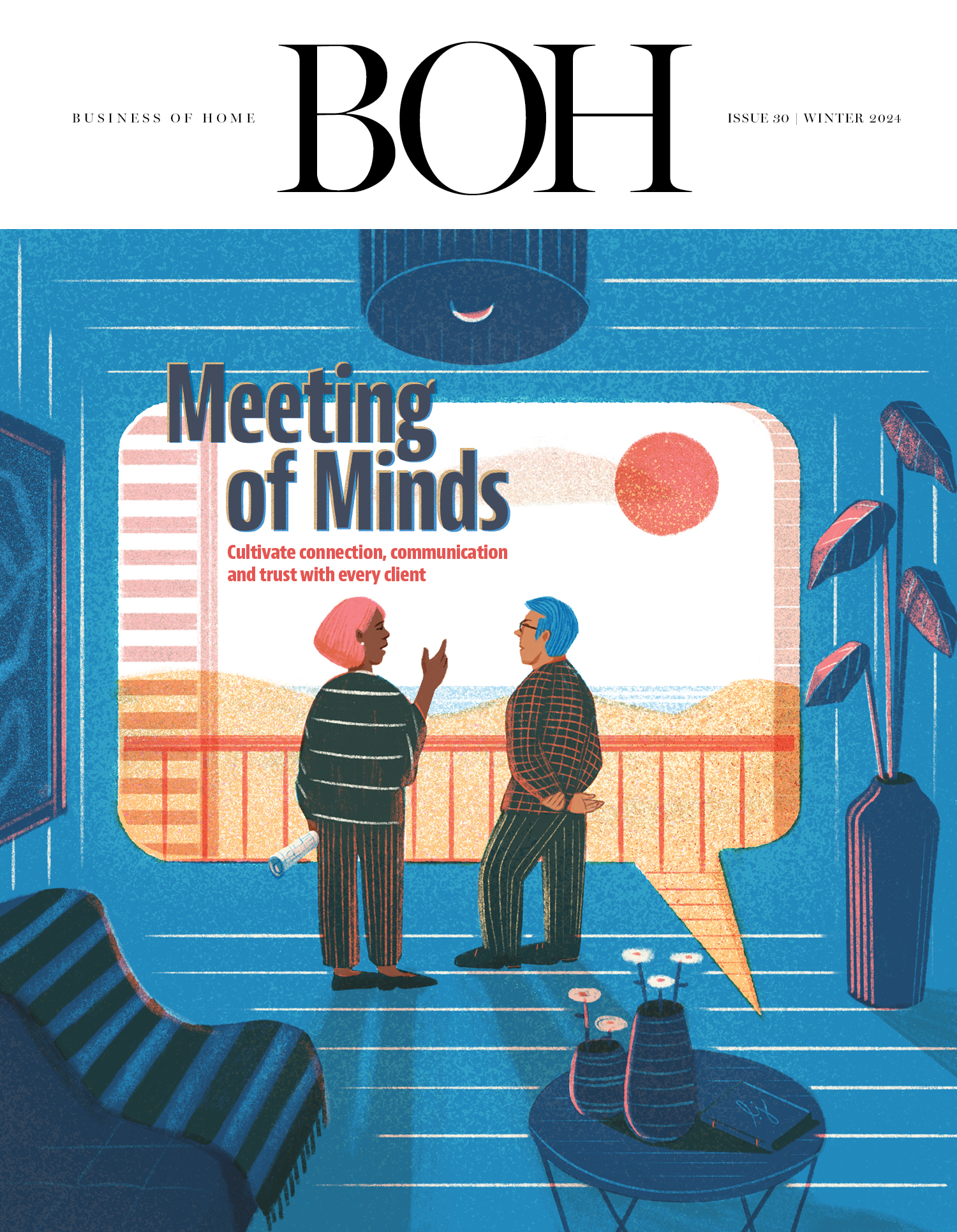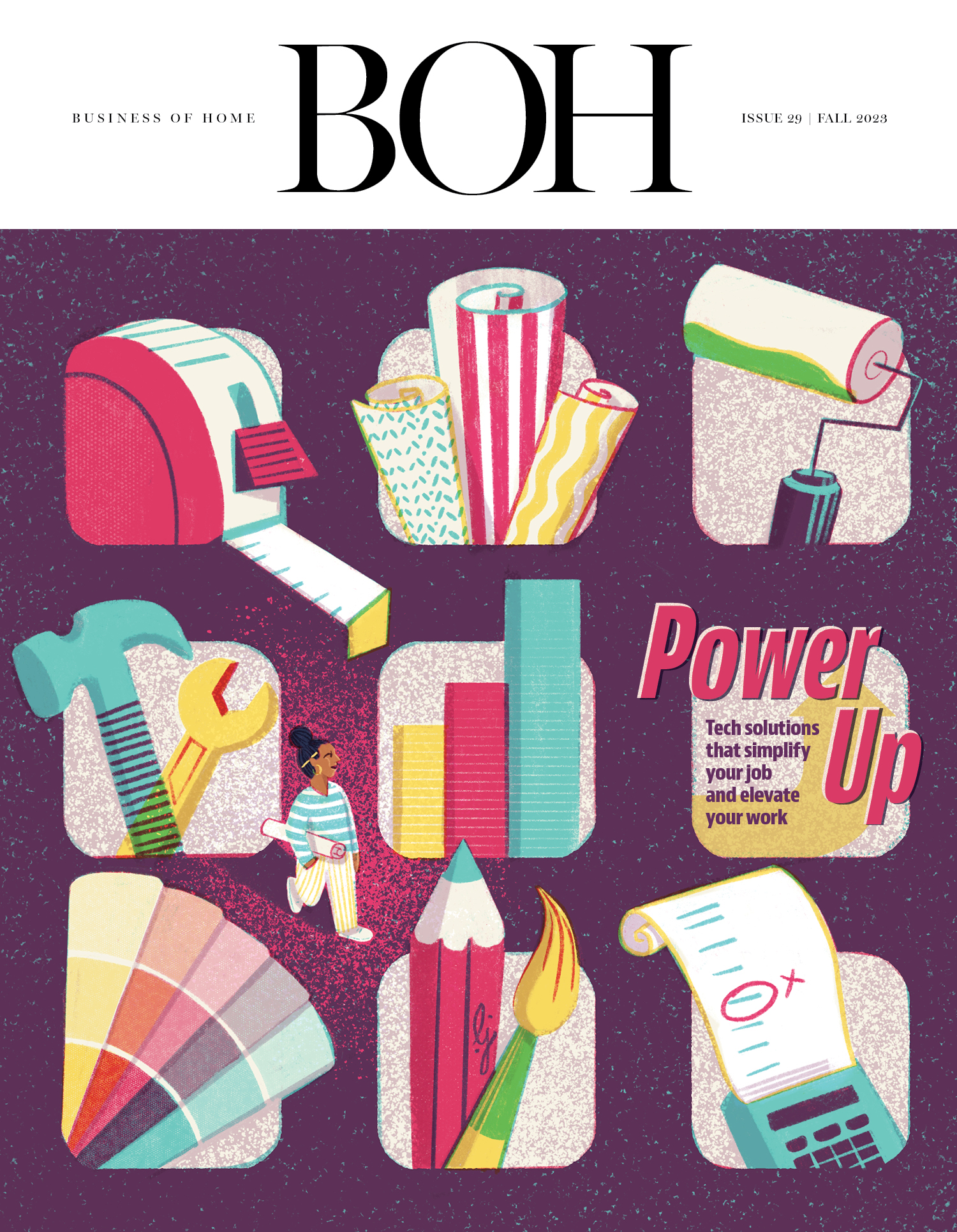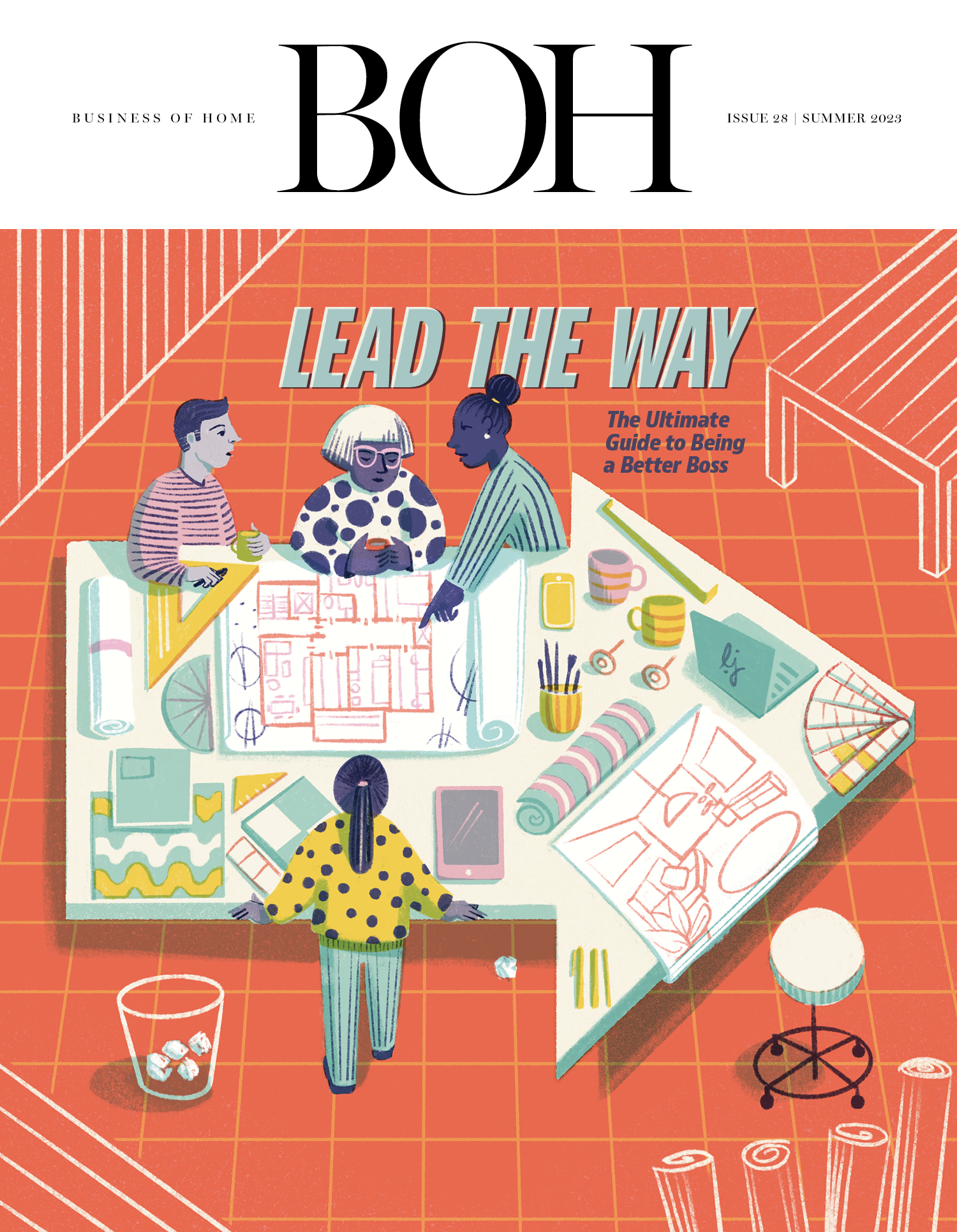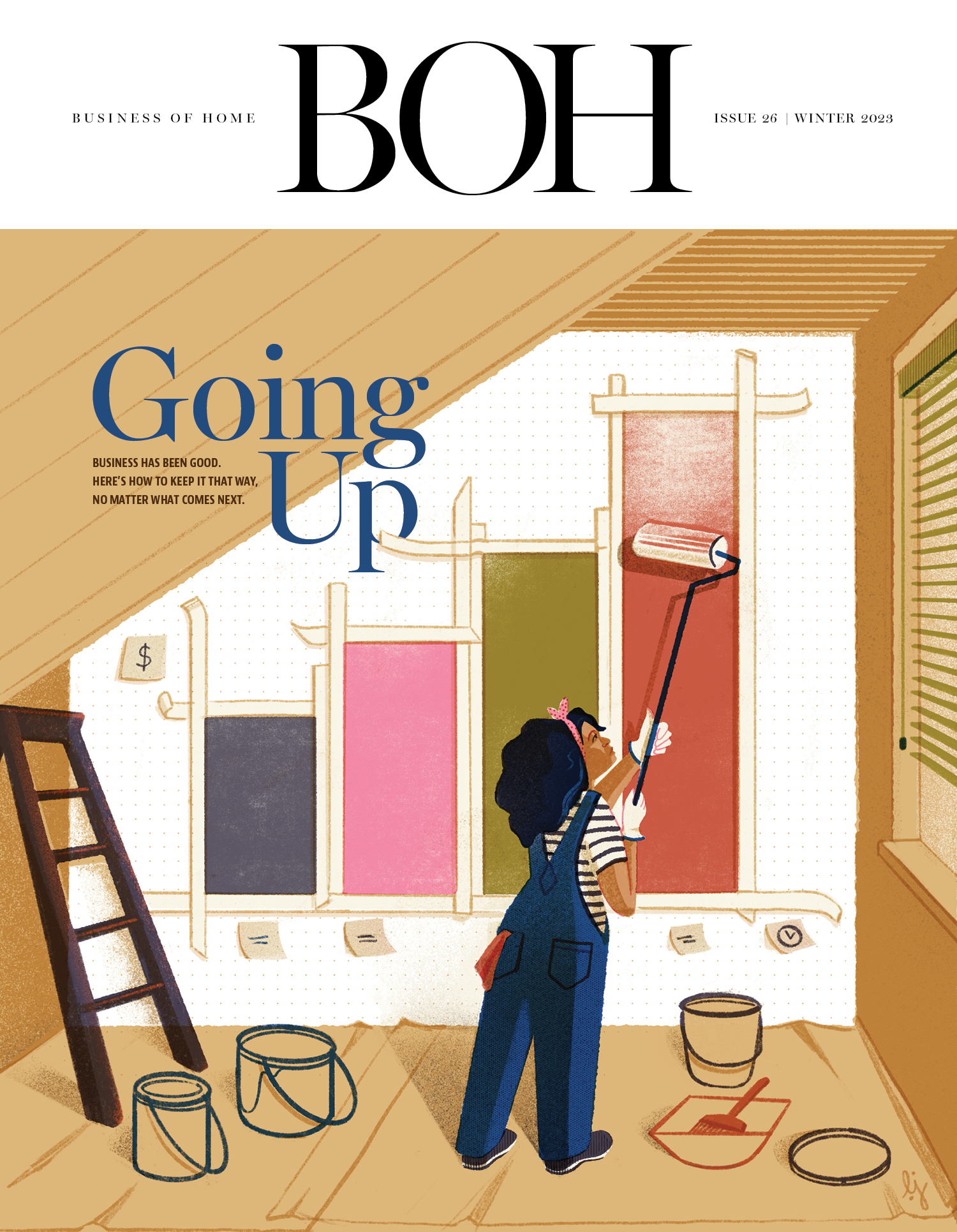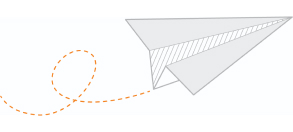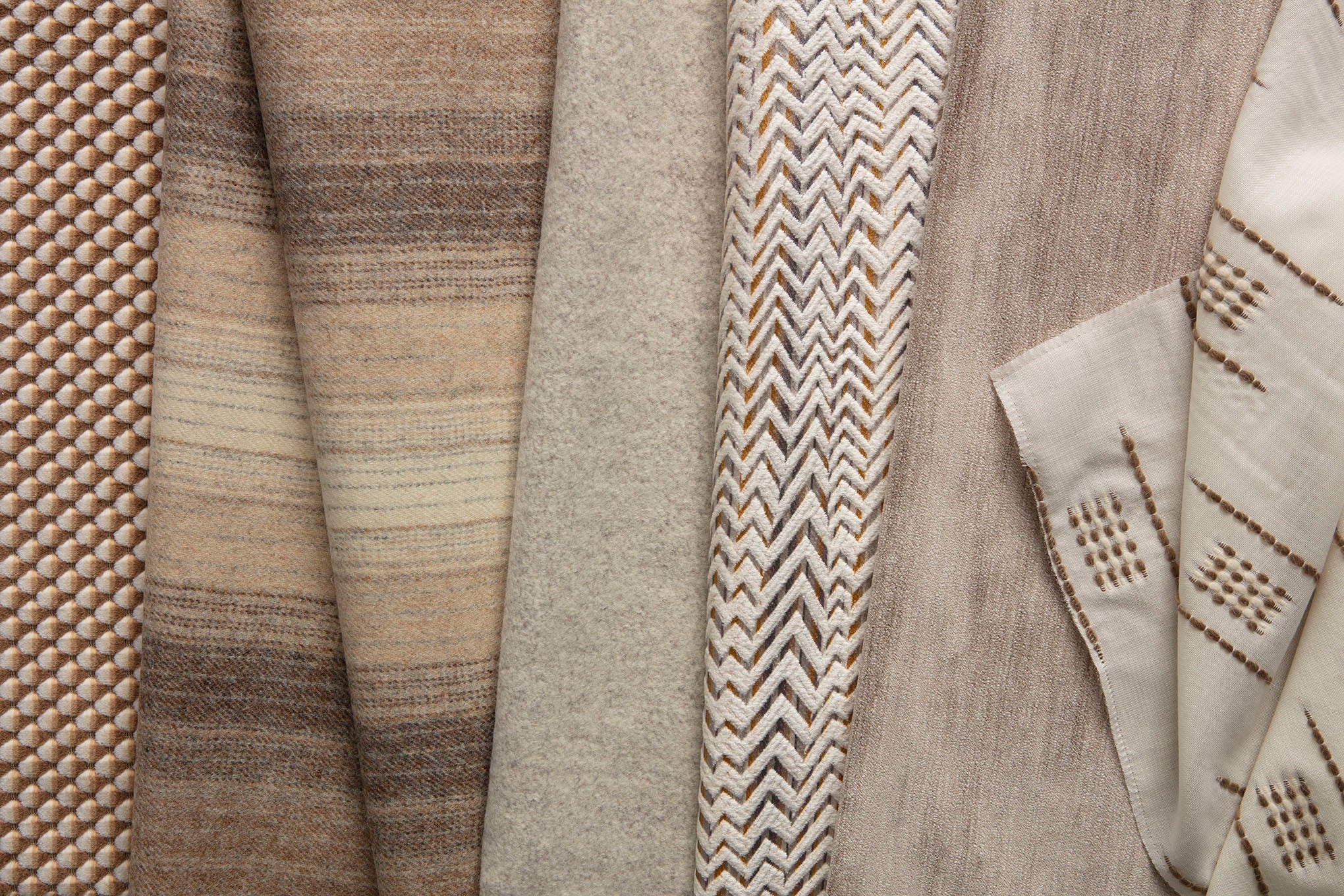In the new BOH series What I Wish Designers Knew, we ask an industry expert to share the ins and outs of their category in the market—including how designers can evaluate materials, make informed decisions for their clients, and avoid common mistakes.
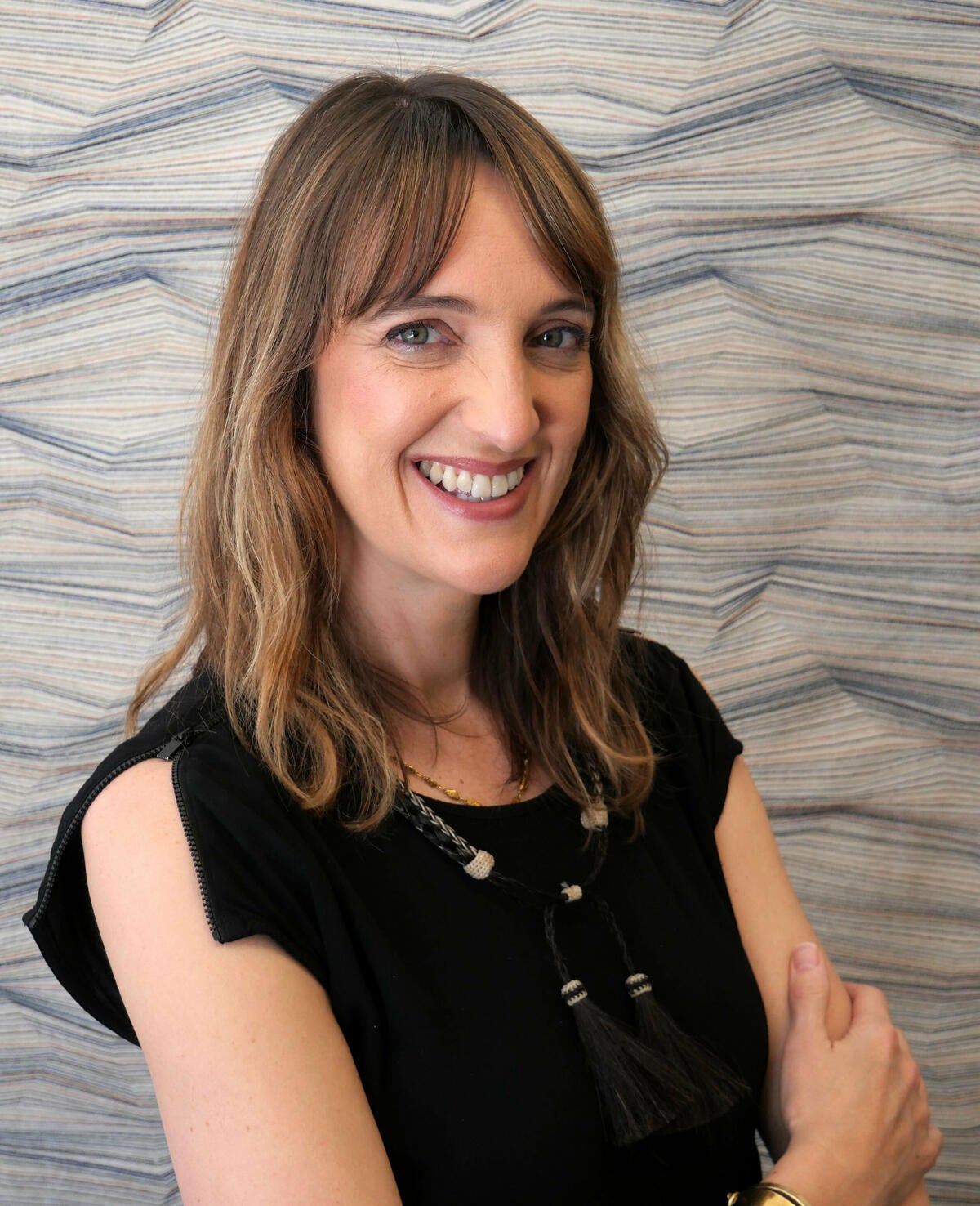
A self-described “total textiles nerd,” Rachel Doriss has been obsessed with fabric since her girlhood on Cape Cod, when her grandmother taught her how to sew, weave, crochet, bead weave and knit. That passion eventually brought her to Pollack in New York, where she has worked for 25 years and been the design director since 2012. Overseeing textiles for upholstery, drapery and decorative use in both residential and commercial settings for a broad range of budgets, she’s not just an aficionado of fabrics but a bona fide authority.
For spring 2025, Doriss and her team of designers have dreamed up both Pollack’s new Open Studio collection and the latest offerings from Spring Street, a recently launched line of residential prints. In Open Studio, innovative yarns and textural weaves create technically sophisticated and visually stunning designs. Spring Street’s motifs this season, rendered in a palette inspired by antique bookbindings, convey a classic yet playful charm. Together, the styles embody the essential ingredients of quality textiles: fibers spun into yarns to create fabrics printed with advanced yet artisanal methods. In the following primer, Doriss explores it all, sharing her deep knowledge—and love—of cloth.
PROTEIN POWER
Wool is a blanket term for the hair of different animals, but is most commonly associated with the coats of lambs and sheep. Resilient and insulating, its fibers have a hollow core that absorbs moisture, remaining dry on the outside—making wool the perfect material for traditional fisherman sweaters and sailor pants. Because it’s coated with lanolin, a naturally produced oil, wool is also inherently flame- and soil-resistant, qualities that translate well to rugs and carpets.
“There’s a perception that wool is scratchy, but it doesn’t have to be,” says Doriss. “It depends on where the fiber comes from and how it’s spun into yarn.” Merino, for example, is renowned for its low denier (a measurement of its fineness based on its weight per length). In worsted wool, a classic choice for men’s suiting, longer lengths, or staples, of the fiber are finished to be straighter and flatter, giving the fabric more luster, or brightness and sheen. A durable option for upholstery, wool also creates sumptuous curtains. “Wool at the window has the most amazing drape,” she says. “It falls perfectly in folds and ripples, and it’s not going to wrinkle.” Heavier wool satins provide a comforting sense of enclosure, while lighter fabrics like Pollack’s Mantra, a sheer wool ground peppered with thick stitches of yarn, offer a gauzy overlay.

“Historically, high-end contract fabrics were always made of wool, and expensive,” says Doriss. With advancements in types of fibers, the market has changed. “Now commercial fabrics rely on synthetic fibers that make them more affordable, with finishes that make them easier to clean.” Relax feigns the appearance of boiled wool, but the boucle textile is actually a wool blend that includes percentages of rayon, acrylic, cotton, polyester, linen, nylon and elastane.
Sheep may be the best-known beasts when it comes to animal fibers (also known as protein fibers), but plenty of other creatures contribute to the conversation. Shorn from the super curly angora goat, mohair fibers have a great memory. “They like to spring back into their original upright position,” says Doriss. This bounciness lends itself to theater seating, where velvet pile like Pollack’s luxe King Mohair will recover no matter how many butts sit on it. Kid mohair, culled from the first shearing of young goats, is even softer. Cashmere goats’ downy winter undercoats are the basis for plush sweaters, scarves and pashminas, while alpaca is another deluxe yet durable fiber. Beyond the family Bovidae, camel hair creates sturdy, insulating carpets, throws and coats. Angora rabbit fur is renowned for its softness, shine and shag. Perhaps the smallest member of the fiber-producing menagerie, though, is the silkworm.
“To cast its cocoon, the silkworm feasts on a diet of mulberry leaves, then secretes liquid silk out of a hole in its head called a spinneret,” says Doriss. Upon contact with the air, the liquid coils and hardens into a smooth encasement. To unspool it, the cocoon is boiled (RIP, little worm), then the silk is reeled off in a single continuous filament. “It’s incredibly time-consuming,” she adds. “It’s kind of unbelievable that this fiber was ever found in the first place.” One cocoon produces about a thousand yards of silk filament. “There’s nothing like the luster of silk, which is best applied residentially in less-trafficked areas,” she continues. With a low resistance to ultraviolet rays, silk fabrics risk degrading, so drapery—especially in sunny climes—merits a lining. But reflecting the movement toward performance fabrics and more casual spaces, silk is often used today strictly as a decorative accent, adorning trim and throw pillows.
INDUSTRY PLANTS
On the flora side of the fiber fence, cotton comes from the plant’s white puffs, which produce inch-long staples. Contrary to wool, cotton is hydrophilic, absorbing moisture. Less durable than its animal counterparts, for interior textiles it tends to be spun with other fibers into an intimate blend, like the hand-woven and ikat-dyed cotton-linen stripe Anthropology from the Spring Street portfolio.
A must-have for mummifying Egyptian royalty thousands of years ago, linen is one of the world’s oldest fibers. To produce it, stalks of the flax plant are cut, dried and retted—a process in which bacteria and moisture rot away other cellular materials so that only bundles of fiber remain to be separated from the woody stem. Those bundles are then combed to further separate short fibers from long, with the long ones being spun into yarn and the short ones, known as tow, left over. “That’s where the term towhead comes from, because it looks like a child’s fair hair,” says Doriss.

Longer, more lustrous and stronger than cotton, linen’s comparatively stiff fibers will wrinkle. “I like to say that linen is the opposite of mohair. Mohair, with its memory, will spring back into place. Linen, once you crumple it, is going to hold that crease,” she says. “It’s part of its appeal and its beauty.” In summer clothes, wrinkles are a welcome trade-off for linen’s breathability. But when measuring for drapes, it’s important to account for humidity. “Linen windowcoverings are going to grow on a humid day, weighed down by retaining moisture, and shrink on a dry one, which is why Pollack always recommends that the drape be hemmed after it has acclimated to the space.” By the same token, while linen creates a comfortable, rumpled, shabby-chic slipcover look, wool is a more resilient choice for most upholstery. “It has a little elasticity, expanding and contracting without sagging,” explains Doriss. “Iconic midcentury designs like Arne Jacobsen’s Egg chair are almost always snugly upholstered in wool blends.”
All plant fibers contain cellulose, and that includes rayon and its many variations: primarily viscose in Pollack’s fabrics, as well as modal, acetate and bamboo, among others. To produce them, raw organic material is liquified with an alkali solution, then—with a tip of the hat to the industrious silkworm—extruded through tiny holes in a showerhead-like apparatus aptly called a spinneret. It, too, hardens into fiber that is spun into yarn—whether long, silken filaments or shorter staples similar to wool, cotton and linen fibers. “Because its strands can be short or long, rayon can imitate the dry hand of linen or the lustrous surface of silk,” says Doriss. Originating in the mid-1800s, rayon was initially referred to as “artificial silk” because it had the same look while being a lot less expensive.
Today, with the increased interest in fully organic fibers, viscose can suffer from comparison, and is often mistakenly regarded as a synthetic. Used in a pile like a velvet, it has a reputation for shading, or color variation, which causes some designers to avoid it. But the percentages on product tags don’t necessarily tell the whole story. “You can have an all-wool textile that’s rough and scratchy or a luxe, silky viscose,” says Doriss. In either a flatter yarn or a more targeted application, it’s problem-free. “It has a beautiful hand, a fluid drape; we use it all over the place; and people love it—so don’t be afraid of viscose,” she adds. In Pollack’s Flicker fabric, a raised viscose chenille zigzags across a multicolored satin. “There’s so much activity, between the stripes in the background and the three-dimensional embellishment on the face, that there’s no way you’re going to spot any shading,” she says.
CHEMICAL ATTRACTION
Synthetic fibers are composed of chemicals. Easy to clean and practically indestructible, polyester was hailed as a miracle material upon its introduction to the public in 1951. “It’s come a long way from the leisure suits of the 1970s,” observes Doriss. Modern-day polyester can easily pass for a natural fiber—witness Spindrift, a feathery, tactile chenille sprinkled with dashes of color, and Conjure, a lush performance velvet with a tonal mélange look. Polyurethane is the basis of patent and other faux leathers. Acrylic, originally created as an alternative to wool, is often used outdoors because it’s both fade-resistant and hydrophobic, impeding mold and mildew by repelling moisture. “We call Sedan Plush, an acrylic velvet available in more than 20 colors, our ‘faux mo’ because it looks so much like mohair,” says Doriss. To lower costs while boosting durability, brands may pair polyester or nylon in the warp (vertical) yarns on the loom with a luxury yarn like a wool boucle or viscose chenille in the (horizontal) weft.
DREAM WEAVERS AND DOUBLE RUBS
With so many fibers in play, yarn is at the heart of what makes a fabric special, and novelty yarns—alone or in striking combinations—give it personality. Topping trends for the past several years is boucle, whose loops form a nubby surface. “It’s like bubbles,” says Doriss. “And it can be spun from any fiber, from polyester to wool.” The same is true of chenille, which has fuzzy pile protruding on all sides just like its French namesake, the caterpillar. In Day Off, synthetic boucle and chenille yarns intermingle to textural, speckly effect.

The more tightly spun its fibers, the stronger the yarn. “Think of it like braiding hair: A tighter braid will hold better,” Doriss continues. “A loose braid will have a softer look, but stray strands will slip out and it’s more easily undone.” The metaphor extends to weave constructions. “In a plain weave, the weft yarn threads—or floats—over then under the warp ground, one up, one down, the same way you’d make a pot holder in grade school,” she explains. A basket weave doubles the equation: two up, two down. Twill is a diagonal weave—just take a close look at your jeans.
“A lot of people think that satin is silk, but it’s not: It’s a weave construction in which the face of the fabric is almost completely comprised of longer horizontal floats on top of the warp,” says Doriss. Satin, too, can be made from any fiber. It’s the reflection of light off the elongated floats that give the fabric its luster. The downside to such beauty, in a shiny satin or a frothy boucle, is an increased susceptibility to snagging.
To test for wear and tear, Doriss encourages designers to “get curious about the fabric: Observe the way it’s woven and how long the floats are on the face—even take a paper clip to the sample and go at it!” Such hands-on experimentation can supplement the information supplied by the brand, which will usually include a number from either the Martindale or Wyzenbeek scale quantifying how a material holds up to abrasion through standardized testing on specialized machines—though the amount of double rubs it can withstand before ripping is just one factor to consider. “Designers might turn over the tag and think, ‘Fabric A passed 75,000 double rubs and Fabric B passed 100,000, so Fabric B must be more durable.’ But that’s not necessarily the case,” she says. Both Spindrift, a 100 percent polyester product, and Relax, a wool-blend boucle, withstand 50,000 double rubs per their Wyzenbeek ratings, but Doriss recommends the latter for lower-traffic, residential settings only. “Even though it passed the same number of double rubs as the polyester, Relax’s loosely looped, felted surface is more prone to abrasion,” she says. Pilling, seam slippage, lightfastness and cleanability are other potential concerns. To help clarify, Pollack includes recommended usage along with Association for Contract Textiles (ACT) symbols on its tear sheets.
CRUSHWORTHY
One of the most popular constructions for upholstery, decorative accents and drapery is velvet—also referred to as plush and pile. To fabricate it, warp yarns weave around a wire weft that is later removed, leaving only the loops—also known as epingle and frisé fabrics, as name-checked in Pollack’s multicolored stripe, Epic Epingle. If the wire has a knife’s edge, it slices the loops as it’s pulled out, resulting in cut pile. Cha Cha, a cotton velvet with dotty op-art vibes, features both, as does Phantom, spun from viscose and scored with arcs of fluffy eyelash fringe.

“There’s a perception that cut velvets are more expensive than loop velvets because they have this strokable sheared surface, but the same amount of time and materials goes into making both,” says Doriss. As boucles and satins are at risk of snagging, pile fabrics like velvet and chenille can get crushed—their panne determining the direction the pile lies. “Some velvets stand straight up, with no panne, and they don’t have a lot of luster,” she says. “A panne velvet is finished with a heavy press roller after weaving.” She likens it to petting a cat: There’s a right way to smooth the fur. How much a velvet gets crushed depends on the density of the weave and the fiber of the yarn, with linen being “the most crushable.” Why would anyone choose linen velvet to begin with? “Because over time it will patina, for an antiqued, old-world look,” she answers. If you want an upholstered piece of furniture to appear new for longer, though, “don’t use a pile fabric at all,” she adds. “Choose a flatter weave instead.”
FIT TO PRINT, PLUS EMBELLISHMENTS
Pollack prioritizes materiality in its designs, elevating the interplay of different yarns and textures through abstract or geometric compositions. Its Spring Street residential line is more representational, placing pattern at the forefront. “You can actually identify a leaf motif,” jokes Doriss. The majority of the designs are printed digitally, quite similarly to paper, with ink heads depositing lightfast dyes on the surface of the base cloth, just via machines a lot bigger than a desktop laserjet. Persephone, a large-scale floral in 100 percent cotton, is based on an archival French botanical painting, while Brick Lane has a rhythmic midcentury spirit. “It’s amazing how digital reproductions can achieve a painterly look,” says Doriss. “And you can have as many colors as you want.”
In screen printing, the fabric is laid down on a yards-long bed, and then individual screens isolating different colors in a pattern are placed one at a time on top of it. “You literally squeegee the ink through the screen onto the cloth,” says Doriss. Meadowland, a linen-cotton blend, features cheerful rolling hills of many hues, each printed using a different screen—14 in all for the pattern. “It’s a lot more time-consuming, but there’s a beautiful quality to the process,” she adds. At the borders of each hill where two colors meet, the slimmest of halos hint at their union, yellow and blue turning into a delicate sliver of green, for example.

Even more artisanal and time-intensive, block printing entails taking a carved wooden block, coating it with pigment, and pressing it by hand to the fabric, again and again. The craftsperson has to master application, using just enough dye to define the pattern, but not so much that it smudges. Charlotta is sequentially stamped with a carving of four petals, any subtle variations in saturation adding to its authenticity. “And it’s just a one-color print,” says Doriss. “Traditional Indian bedspreads will have multiple colors and patterns, all done with blocks by hand.”
Both Meadowland and Charlotta are further embellished by embroidery. Before any of the petals are ever printed, Charlotta’s ground cloth is stretched flat like a canvas across a giant frame and machine-embroidered with little jewel-like medallions that will sit at the center of each flower. Meadowland’s chunky hillside stitches are registered on top of the screen print through hand-guided embroidery, the weaver following the pattern on a round wooden hoop attached to the sewing machine. “It’s quite a complex fabric!” says Doriss. In Corsage, infinite fields of tiny daisies bloom across an opulent brocade, with Lurex, a synthetic metallic yarn, forming glimmering pinpoints that are surrounded by tonal petals of machine-stitched space-dyed yarn. “Basically, the yarn is tie-dyed, so for each of the four colorways, a range of hues in the same family covers the face of the densely embroidered fabric,” she says.
Perhaps the most unusual embroidery in Pollack’s spring collection is Coquette, a fabric that alternates horizontal bands of mod diamonds set inside circles with open, octagonal fretwork reminiscent of crochet. “We embroidered the pattern on a water-soluble ground—a nonwoven material thin as a dryer sheet,” says Doriss. Upon washing, the ground dissolves, leaving the light-filtering lattice of stitches “floating in space.”
PEAK PERFORMANCE
With their delicacy and adornment, embroidered fabrics make indulgent accents. For hardworking, high-traffic or outdoor areas subjected to food, drink, kids, pets and the elements, performance fibers and textiles provide a practical solution. “They’re not precious,” notes Doriss.
Most yarn is dyed after being spun but before weaving. In solution dyeing, the color is added to synthetic fibers like polyester and acrylic in the liquid stage, molecularly bonding with them before they’re extruded. “The color is an intrinsic part of the fiber, making it much more resistant to fading from sun exposure and bleach,” says Doriss. Many outdoor fabrics are solution-dyed, though not all. Mojave Stripe, consisting of 100 percent postconsumer recycled polyester, is traditionally yarn-dyed, but with high heat and specific chemicals that help it hold up to UV rays and bleach cleaning. Indoor-outdoor Diamond Turn, woven from polyolefin, is not bleach-cleanable. Gemini is, but the fuzzy, half-moon-punctuated fabric is not designated for outdoors. “There’s a lot of variation between outdoor and performance, but all of Pollack’s outdoor fabrics have been tested to pass colorfastness standards and are made with hydrophobic fibers that resist moisture, mold and mildew,” she explains.

THE FINISH LINE
Customers often associate finishes with an additional layer of protection. For Doriss, the term has multiple meanings. “We do put stain-repellent finishes on some fabrics,” she says, citing Adrift, a Sunbrella contract performance textile that sports foamy striations of color. “But when I think of finishes, it’s about experimenting with the fabric after weaving to take the look to the next level.” Wool Horizon’s mélange yarns are brushed to subtly blur the striped surface for a calming ombre effect. Flicker includes a yarn that shrinks when heated, exaggerating the 3D zigzag of the herringbone weft.
“So much of what makes Pollack’s fabrics interesting is the luxurious surface and soft hand,” says Doriss. Her approach to design is intuitive and open, less focused on fleeting trends than innovative artistry. “The fabrics speak to me about color—I don’t come up with a seasonal theme or specific palette—and a lot of the patterns start out from hand-drawing or hand-painting,” she says. “We apply our technical expertise to transform them.” It’s a concept embedded in every cloth the company makes. The spring collection’s signature fabric, Open Studio, a digital print with a vintage rec room vibe on cotton velvet, patchworks squares of different sizes filled with stripes of several colors. “It’s what we call a bridge fabric, because it brings together all the other hues in a room scheme.”
A similar unifying dynamic informs all of Pollack’s offerings—inspiring serendipitous pairings across its various collections. When browsing Spring Street in search of a statement print for a bolster, designers have the bonus benefit of access to Pollack’s extensive portfolio, full of hundreds of durable fabrics to upholster the sofa that pillow will sit on. As Doriss summarizes: “It’s the best of both worlds.”
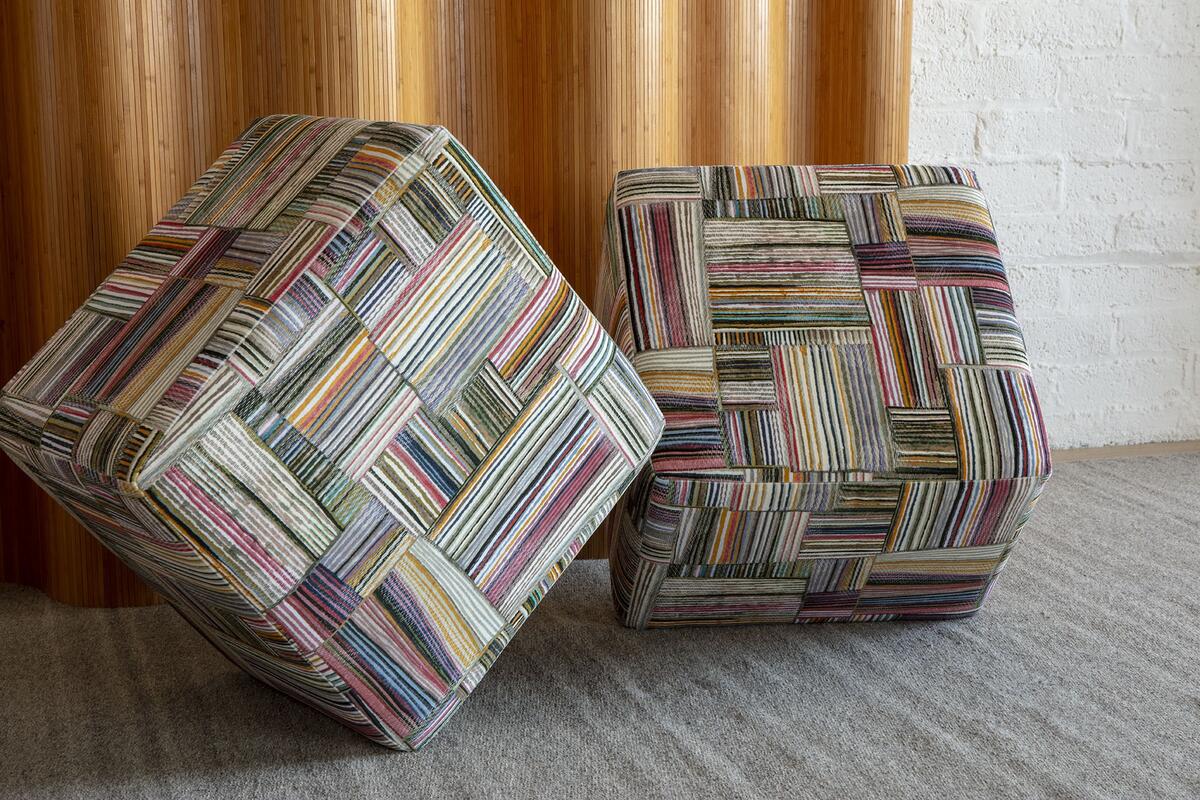
This story is a paid promotion and was created in partnership with Pollack.
Homepage image: Pollack’s fabrics emphasize innovative pairings of yarns and unique finishes that give them a soft, luxurious hand. Styles from left: Cha Cha, Wool Horizon, Relax, Flicker, Conjure and Mantra | Courtesy of Pollack





